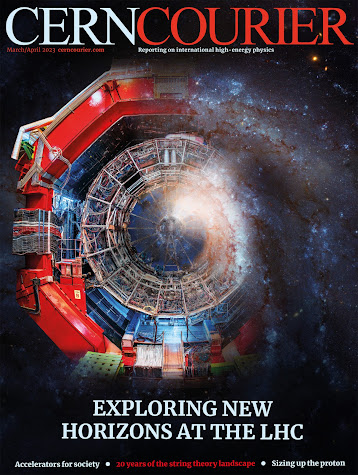Image: CERN Accelerating science
CERN (European Organization for Nuclear Research) is an international research laboratory located on the Franco-Swiss border. It is the largest and most advanced particle physics laboratory in the world.
CERN scientists have made significant advances in understanding the nature of matter and energy. In 2012, they discovered the Higgs boson, a fundamental subatomic particle that is responsible for the mass of other particles. This was an important discovery as it helped complete the Standard Model of Particle Physics, which is a theory that describes the four fundamental forces of nature.
CERN scientists are also working on a number of other research projects, including the Large Hadron Collider (LHC), the world's largest and most powerful particle accelerator. The LHC was built to collide protons at high energy in order to study the effects of the collision. Data collected by the LHC is being used to study a range of questions, including the origin of the universe, the nature of dark matter and the existence of extra dimensions.
CERN's advances have a significant impact on our understanding of the world. The discovery of the Higgs boson, for example, helped solve one of the biggest mysteries in physics. Data collected by the LHC is also being used to develop new technologies such as medical treatments and new forms of energy.
CERN is a leading international research center and its advances are helping to shape the future of science.
CERN scientists have made a number of important discoveries in recent years, including:
- The discovery of the Higgs boson in 2012, a fundamental subatomic particle that is responsible for the mass of other particles.
- The observation of gravitational waves for the first time in 2015, which are waves in the fabric of spacetime.
- The discovery of new types of particles, including pentaquarks and tetraquarks.
- The observation of new physical phenomena, such as the generation of pairs of electrons and positrons.
- The development of new technologies, such as new particle detectors and new data analysis methods.
- These discoveries are helping scientists to better understand the nature of matter and energy, and are also leading to the development of new technologies that can have a positive impact on society.
Black Hole
It is possible for CERN to create a black hole, but it is very unlikely that it will be large enough to cause damage to Earth. Black holes are formed when a star dies and its core collapses under its own weight. The star's core becomes so dense that gravity is so strong that not even light can escape.
The LHC is a particle accelerator that collides protons at high energy. The energy of collisions is so high that it can create microscopic black holes. However, these black holes are very small and quickly disappear as they evaporate due to Hawking radiation.
Hawking radiation is radiation that is emitted by black holes. This radiation is caused by the curvature of spacetime around the black hole. Hawking radiation is so weak that it takes a long time for microscopic black holes to evaporate. Hawking radiation is thermal radiation believed to be emitted by black holes due to quantum effects. It was first proposed by British physicist Stephen Hawking in 1974.
Hawking radiation is caused by the bending of space-time around the black hole. This curvature is so strong that the laws of quantum physics are broken. As a result, pairs of particles and antiparticles are created near the black hole's event horizon. One of the particles is pulled into the black hole, while the other escapes. That particle that escapes is Hawking radiation. Hawking radiation is very weak, so it is very difficult to observe it. However, scientists believe that it is responsible for the slow evaporation of black holes.
The lifetime of a black hole is determined by its mass. The greater the mass of the black hole, the longer it will take to evaporate. The universe's most massive black holes will take trillions of years to evaporate. Microscopic black holes, which may have been created in the Big Bang, can evaporate in just a few seconds.
Hawking radiation is a fascinating phenomenon that is still not fully understood. However, it is a reminder that black holes are not passive objects, but are in constant interaction with their environment.
CERN scientists estimate that the probability of a microscopic black hole created at the LHC causing damage to Earth is very small. This is because microscopic black holes are very small and disappear quickly. However, CERN scientists are monitoring the LHC to ensure that no microscopic black holes are created that are large enough to cause damage to Earth.
Stay updated CERN Courier




